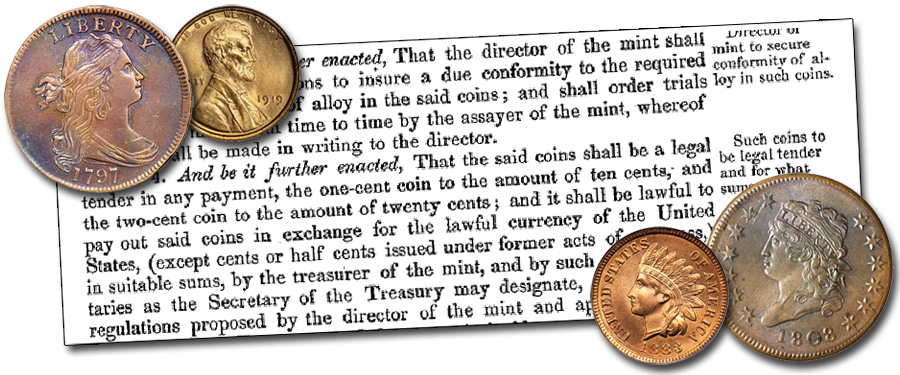
Question: Someone told me that large cents and half cents were not actually legal tender. Is that true? If so, how is that possible as they were made at the U.S. Mint according to designs approved by Congress and with supplies purchased for the Mint’s use in providing coinage? Does this mean that the one-cent pieces we use today are not legal tender?
Answer: The Mint Act of April 2, 1792, provided that silver and gold coins be legal tender, but omitted mention of cents and half cents in this regard. The discussions in Congress leading up to the Act of February 21, 1857 (which provided for the copper-nickel cent of a smaller size) included a provision to make the coin legal tender up to 10 cents, but the final act did not include this wording. It was not until 1864 and the change to bronze composition that the cent was officially given legal tender status. The Act of April 22, 1864 stated: “That the said coins shall be a legal tender in any payment, the one-cent coin to the amount of ten cents;…” It was the change to the bronze composition and its relatively small intrinsic value that prompted the change in legal tender status. Previously it was the view of the government that the copper large cents and copper-nickel small cents had a higher intrinsic value and therefore there was no need for them to be legal tender.
As for modern day cents, they remain legal tender and, in fact, the Coinage Act of 1965 dropped any previous limits on their legal tender status, and cents, along with all other United States coins, are considered legal tender up to any amount.





